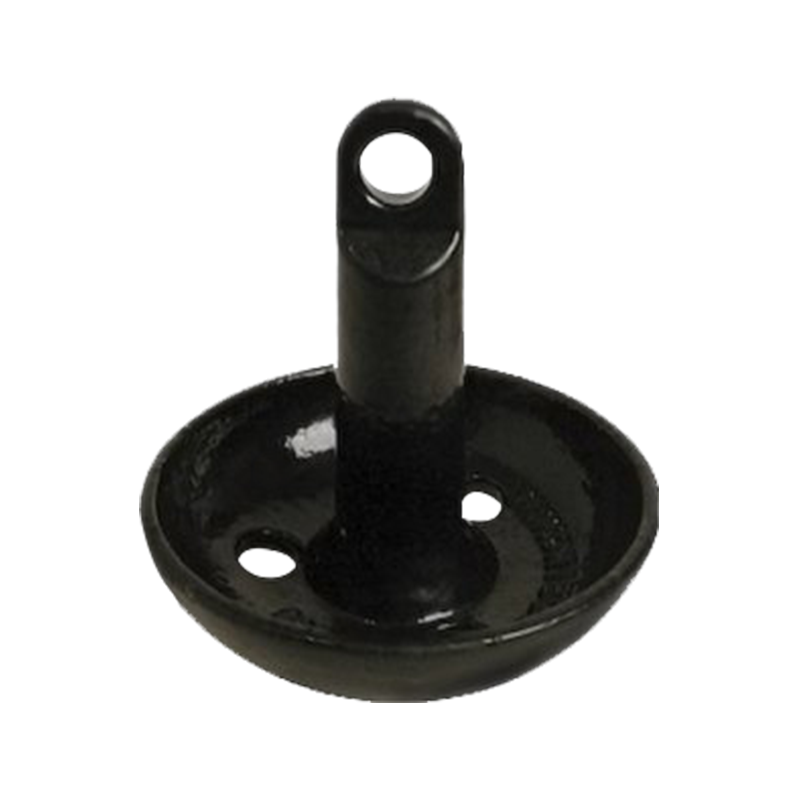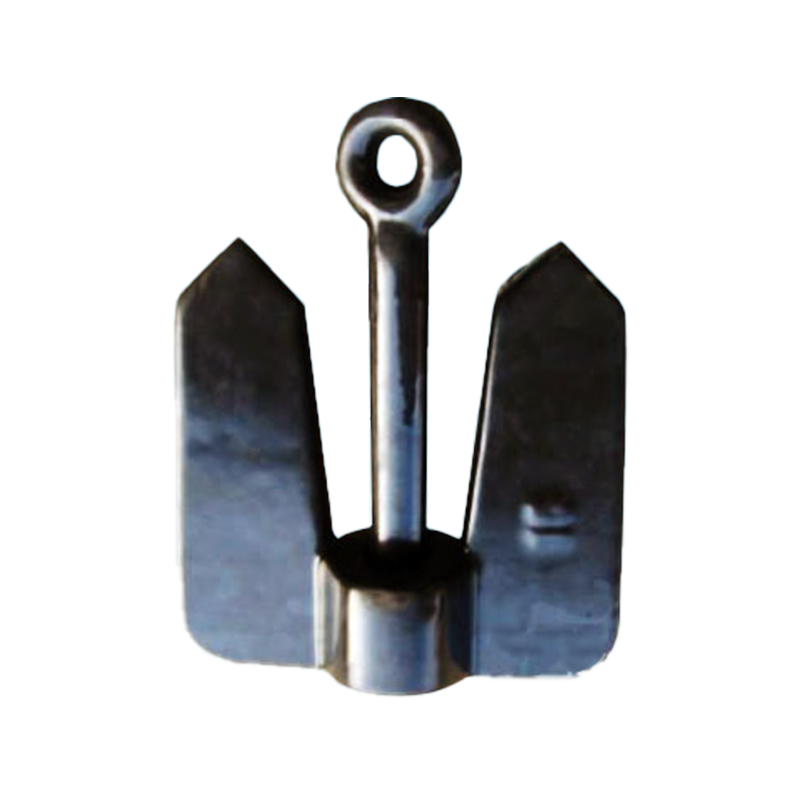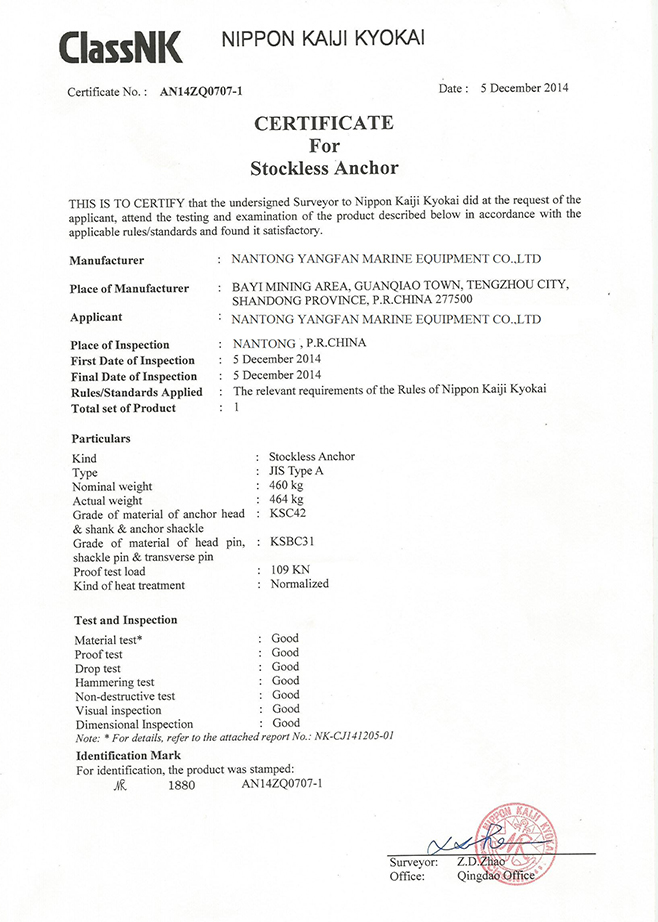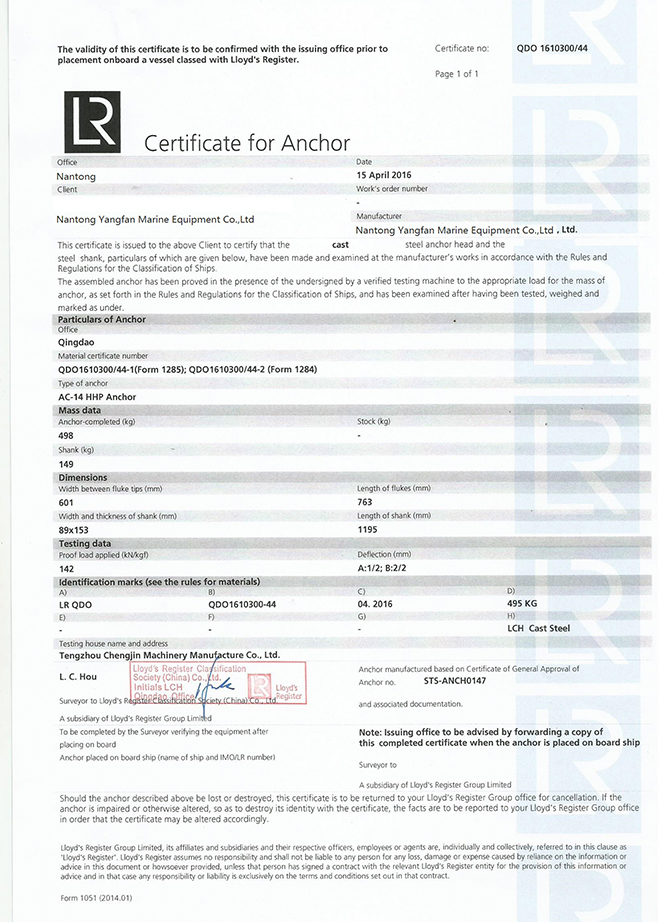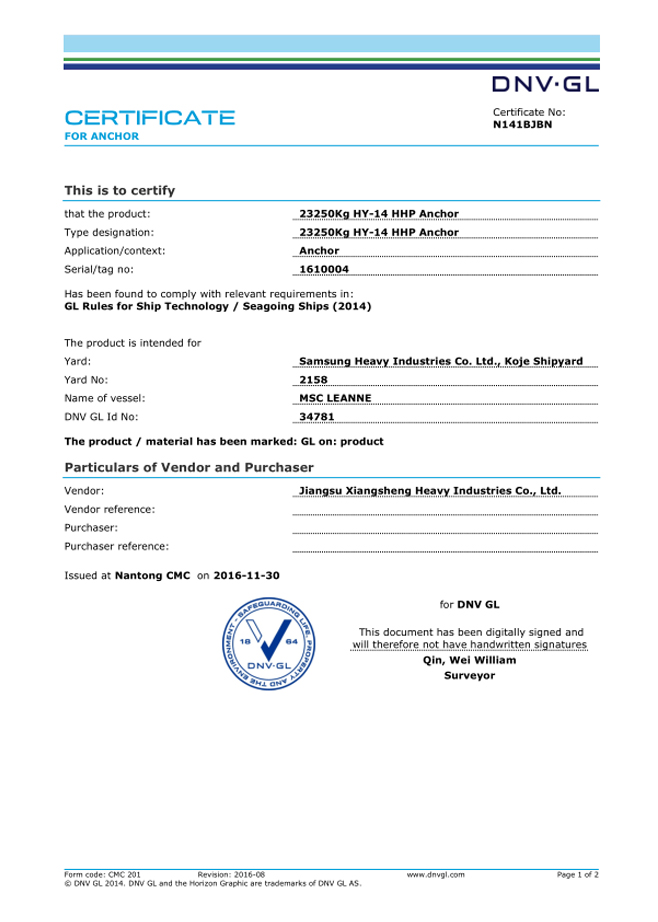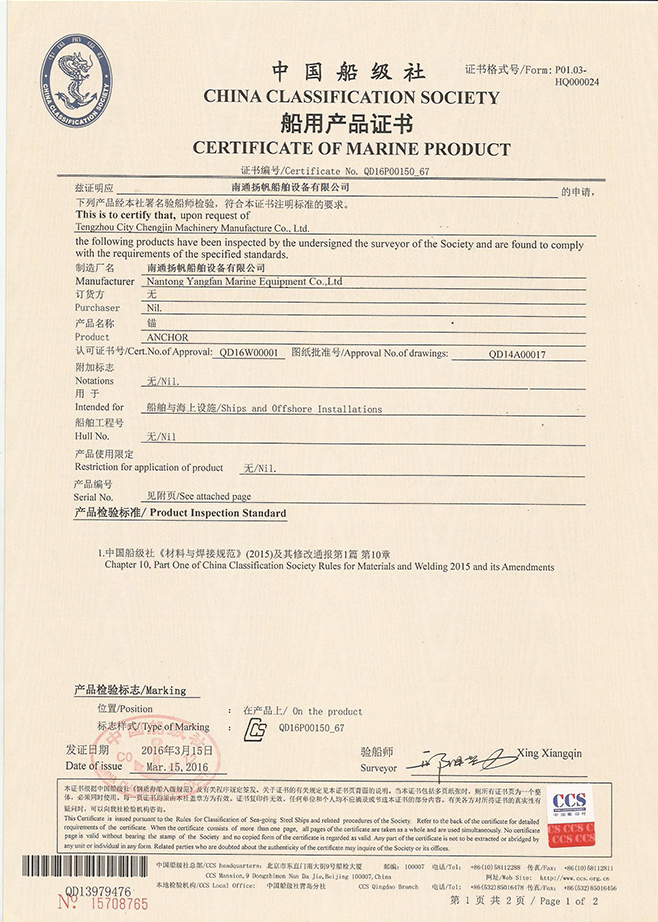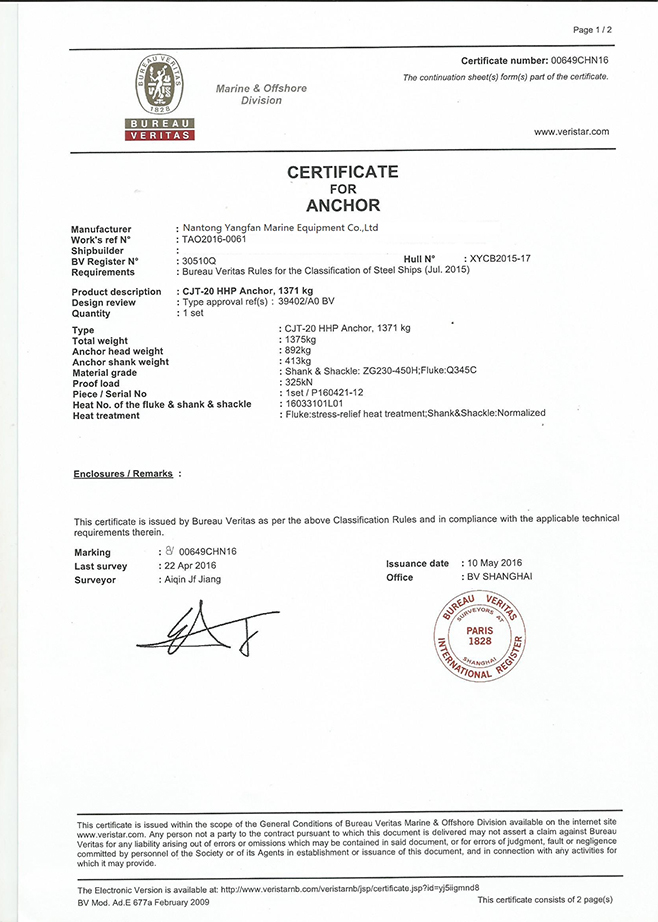Maintenance and cleaning methods of PE yacht anchors
The Importance of PE Yacht Anchor Maintenance
As a critical component of mooring, PE yacht anchors directly impact vessel safety. While PE material offers excellent corrosion resistance and resistance to seawater erosion, surface contamination, minor scratches, and mechanical damage may develop over time. Improper maintenance can degrade anchor performance, impact anchoring effectiveness, and even pose safety risks. Regular maintenance and cleaning not only preserve the anchor's appearance but, more importantly, prevent material aging, corrosion accumulation, and structural damage, ensuring the anchor remains in optimal function under various sea conditions.
Cleaning Steps for PE Yacht Anchors
Cleaning is a crucial part of maintenance. Given the characteristics of PE material, the cleaning process should avoid the use of highly corrosive chemicals to ensure environmental friendliness and effectiveness. Remove the anchor from the water and thoroughly rinse the surface with fresh water to remove salt and sediment. Salt accumulation is a major factor in material surface aging, and fresh water rinsing can effectively slow this process. Use a soft brush or sponge to gently scrub the anchor surface, paying particular attention to the anchor claws, seams, and moving parts to prevent dirt accumulation that can affect anchor function. Avoid using hard tools such as wire brushes to avoid scratching the PE surface.
For stubborn oil stains or biological deposits, use a mild, neutral detergent. Ensure the detergent is non-toxic and easy to rinse. After cleaning, rinse again with plenty of fresh water to remove any residual detergent. Allow the anchor to air dry in a well-ventilated, dry environment, avoiding prolonged exposure to direct sunlight to minimize the effects of UV rays on the PE material.
Daily Maintenance Precautions for PE Yacht Anchors
The key to daily maintenance is regular inspection and prompt resolution of any problems. Users should develop a rational maintenance plan based on frequency of use and environmental conditions. Regularly inspect the anchor body for cracks, deformation, or abnormal wear, especially on the anchor claws and connection areas, which are subject to significant stress during use. Inspect the anchor chain and connecting buckle for wear to ensure a secure connection and prevent chain damage from causing the anchor to fall off.
Avoid violent impacts between the anchor and hard objects to prevent structural damage to the PE material. If damage is detected, promptly assess and repair or replace it to ensure the safety of the anchor. When not in use, anchors should be properly stored to avoid prolonged exposure to sunlight and high temperatures. This reduces the effects of UV rays on the PE material and prolongs its service life. Keeping the anchor clean and dry helps prevent marine organisms from attaching and microbial growth, minimizing erosion and contamination.
Common Problems and Solutions
Users may encounter several common problems with PE yacht anchors. Proper solutions can help reduce the risk of failure.
1. Surface scratches and abrasion. Minor scratches will not affect the function of the anchor, but deep scratches should be avoided. If deep scratches are found, promptly evaluate and implement repair measures, such as using a specialized PE material repair agent for surface reinforcement.
2. Loose anchor connections. Regularly check the tightness of bolts and connectors, and reinforce or replace as necessary to ensure a secure connection.
3. Anchor chain entanglement or rust. Although anchor chains are mostly made of metal and rust is a common problem, regular cleaning and anti-rust treatment of the anchor chain can help extend the overall service life of the chain and anchor.
4. Biological adhesion. Marine organisms such as algae and shells adhere to the anchor surface, increasing drag and weight, and affecting anchoring effectiveness. Regular cleaning and the use of environmentally friendly anti-adhesion agents can effectively control this problem.
Maintenance Cycle and Record Management
To ensure the continued good condition of PE yacht anchors, it is essential to establish a maintenance cycle and record management system. We recommend developing a quarterly or semi-annual maintenance plan based on actual usage intensity and environmental conditions, including comprehensive inspections, cleaning, and necessary repairs. Maintenance records should detail the time, content, problems found, and corrective actions for each maintenance session, providing a basis for subsequent management and decision-making. Additionally, regularly evaluate the overall performance and service life of the anchor and adjust the maintenance plan accordingly.
The following table provides an example of PE yacht anchor maintenance management:
| Maintenance Item |
Cleaning Method |
Inspection Focus |
Maintenance Frequency |
| Surface dirt and stains |
Rinse with fresh water, mild detergent if necessary |
Check for surface cracks or discoloration |
After each use or weekly |
| Salt and marine deposits |
Soak in fresh water, use soft brush for scrubbing |
Inspect for corrosion or material degradation |
Monthly or after extended sea exposure |
| Mechanical parts |
Lubricate moving parts with marine-grade lubricant |
Check bolts, pins, and hinges for wear or looseness |
Quarterly |
| Storage conditions |
Store in dry, shaded area away from direct sunlight |
Check for deformation or UV damage |
Before long-term storage |
| Post-cleaning |
Dry thoroughly to prevent moisture retention |
Verify all parts are dry and clean |
After every cleaning |
Storage and Transportation Considerations for PE Yacht Anchors
The storage and transportation of PE yacht anchors also affect their service life and performance. When not in use, anchors should be stored in a dry, cool environment, away from direct sunlight, high temperatures, and humidity to mitigate the effects of UV rays and thermal expansion and contraction on the material. For long-term storage, it is recommended to hang or place the anchor on a well-ventilated rack to avoid direct contact with the ground, which could lead to water accumulation or moisture intrusion. During transportation, ensure the anchor is securely fixed to prevent collisions and friction. A soft cushion or protective film can be placed between the anchor and other items to minimize damage to the PE surface. Proper packaging not only ensures the integrity of the anchor but also facilitates subsequent use and maintenance.
The Impact of Different Environments on PE Yacht Anchor Maintenance
Yachts operated in different waters, such as freshwater, seawater, and port environments, present different requirements for anchor maintenance. Seawater, with its high salt concentration and strong corrosiveness, requires more frequent cleaning and inspection. Freshwater environments are less corrosive, but the accumulation of silt and organic matter must still be prevented.
Port areas are often exposed to industrial pollutants and ship oil, which may adhere to the anchor surface and affect its performance. Users should adjust the cleaning agent and maintenance frequency according to the specific environment to ensure that anchor performance is not affected.
Suggestions for Improving User Maintenance Skills
The maintenance of PE yacht anchors depends largely on the user's operating procedures and maintenance awareness. Users are advised to regularly participate in relevant marine equipment maintenance training to understand the characteristics of PE materials and maintenance techniques. Shipowners and operators should establish detailed anchor maintenance records, clearly defining maintenance responsibilities and operating standards. Using standardized checklists and maintenance procedures will help reduce human oversight and improve anchor management. Users are encouraged to monitor industry trends and technological advancements, promptly updating maintenance plans to extend the life of PE yacht anchors.





 English
English 中文简体
中文简体
